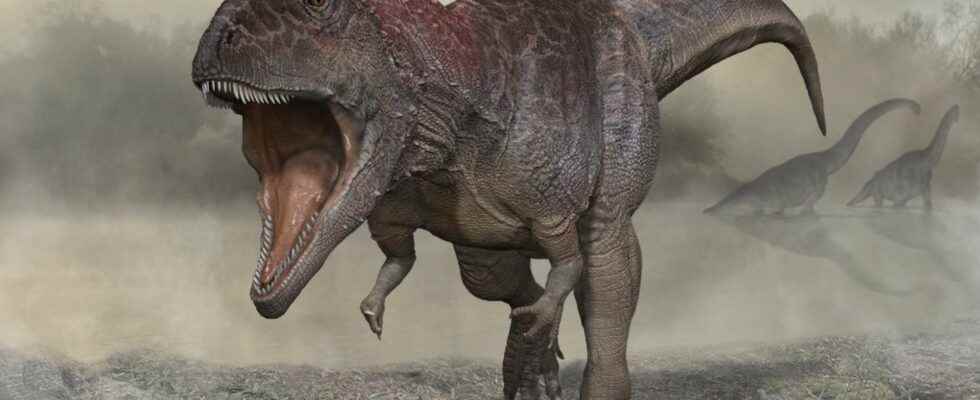That the dreadful tyrannosaurus rex console himself, he’s not the only large predator to have had ridiculously tiny arms. The discovery of Meraxes gigaspresenting the same specificities, however raises the question of such morphological convergence, despite the distance between the two species on the evolutionary tree.
You will also be interested
[EN VIDÉO] Interview: three exceptional dinosaurs Dinosaurs are amazing creatures by their nature, their abilities or their size. They know no equivalent in the current animal world. Futura-Sciences interviewed Éric Buffetaut, paleontologist, to tell us about the most surprising dinosaurs.
From dinosaurs Carnivorous giants, Tyrannosaurs are characterized by ridiculously disproportionate arms compared to the rest of the body. However, a team of scientists has just discovered a new species of dinosaurs with the same morphological particularity. It’s about Meraxes gigas. The most surprising thing is that this new dinosaur has nothing to do with Tyrannosaurs. The two species would have evolved completely independently towards a morphology similar, raising the question of the origin of this characteristic and his interest.
A new skeleton discovered in Patagonia
the Meraxes gigas belongs to the group of Carcharodontosaurids, which lived at the beginning of the Cretaceous, that is to say about 129 to 89 million years ago. The Carcharodontosaurids are among the largest terrestrial predators that have existed, such as the Giganotausorus where the Tyrannotitan, for example. But not another well-known predator, the tyrannosaurus rex, which is part of a different group. Although their characteristics physical are relatively close, Mr gigas and T. rex did not in fact live at the same time at all, Mr gigas having disappeared about 20 million years before the appearance of T. rex. The two species are also quite distant on the evolutionary tree, and have no direct link. The fact of having very small arms not being linked to a transmission genetichow to explain that such a morphology is found on these two species?
The skeleton of Meraxes gigas recently discovered in northern Patagonia (Argentina) could give some clues. the fossil unearthed belongs to an adult individual, certainly 45 years old, 11 meters long and having probably weighed more than five tons. The skeleton is particularly complete at the level of the arms and the legs and shows the presence of large muscular insertions as well as a very developed pectoral girdle. The arms of Meraxes gigas were therefore small, but strong. A fact which is important since it means that this morphology is not the result of a atrophy gradual reduction of the upper limbs because of their uselessness. Despite their size, these little arms had to be used for something.
A genetic peculiarity linked to the size of the head?
For Juan Ignacio Canale, lead author of a study published in the journal Current Biology, Mr gigasjust like the T. rexcould have used its small arms during reproduction, in particular to hold the female during thecoupling. Other theories propose that they could have been useful for getting up after a fall. However, it is impossible for the moment to have any certainty on their exact usefulness.
None of these theories, however, explain why the arms of these giant monsters were so short. For Juan Ignacio Canale, it could be the result of genetic selection linked to the size of the head, the two elements seeming closely linked. The researchers have in fact noticed that in general, among large predators such as Mr gigas and T. rexthe larger the head, the smaller the arms.
It would thus seem that in these dinosaurs, a large head implies a negative interaction with the length of the arms. In large predators, a large head being an asset and certainly a criterion for breeding, it would indeed have selected individuals with small arms. A new track to dig.
The fossil also provides other valuable information about the social life of Meraxes gigas and on the importance of the head in this species. the skull is indeed decorated with several “ornaments”: ridges, bumps, furrows and small horns, characteristics only found in adult individuals. Hence the hypothesis that these cranial ornaments certainly played a role in the sexual attractiveness of the male.
Interested in what you just read?
